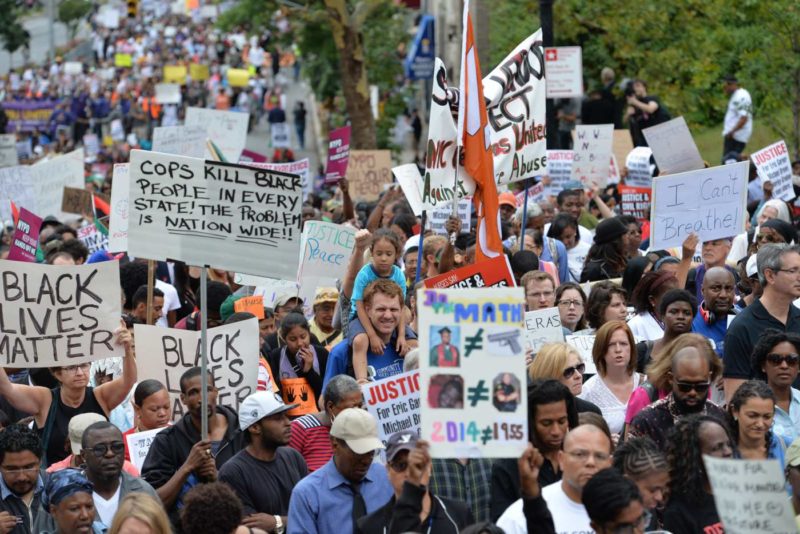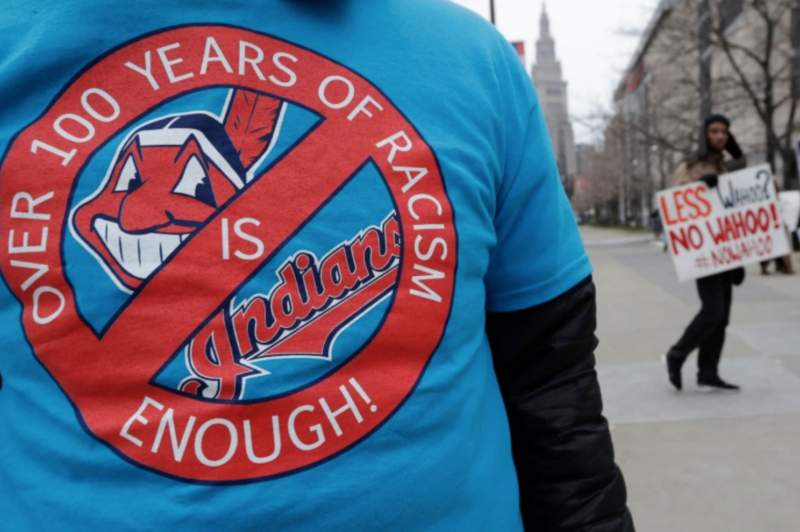Special News Series: Rising Up For Justice! – Indians nickname decision came from ‘awakening’ after George Floyd’s death
Share
Explore Our Galleries
Breaking News!
Today's news and culture by Black and other reporters in the Black and mainstream media.
Ways to Support ABHM?
Introduction To This Series:
This post is one installment in an ongoing news series: a “living history” of the current national and international uprising for justice.
Today’s movement descends directly from the many earlier civil rights struggles against repeated injustices and race-based violence, including the killing of unarmed Black people. The posts in this series serve as a timeline of the uprising that began on May 26, 2020, the day after a Minneapolis police officer killed an unarmed Black man, George Floyd, by kneeling on his neck. The viral video of Floyd’s torturous suffocation brought unprecedented national awareness to the ongoing demand to truly make Black Lives Matter in this country.
The posts in this series focus on stories of the particular killings that have spurred the current uprising and on the protests taking place around the USA and across the globe. Sadly, thousands of people have lost their lives to systemic racial, gender, sexuality, judicial, and economic injustice. The few whose names are listed here represent the countless others lost before and since. Likewise, we can report but a few of the countless demonstrations for justice now taking place in our major cities, small towns, and suburbs.

To view the entire series of Rising Up for Justice! posts, insert “rising up” in the search bar above.
Indians nickname decision came from ‘awakening or epiphany’ after George Floyd death, team owner says
Indians are one of the last teams with Native American monikers
By Ryan Gaydos, Fox
December 13, 2020

Cleveland Indians owner Paul Dolan said Monday an “awakening or epiphany” after the death of George Floyd was a part of the reason why the team name will eventually change.
Dolan and the organization announced it officially started the process of changing the team’s name but it will likely stay as the Indians through the 2021 season. Dolan told the Associated Press in an interview that he “empathizes” with fans who don’t want the name altered. Cleveland has been known as the Indians since 1915…
In a statement attributed to Dolan, he said that he talked to Native American and local leaders about the name.
“Hearing firsthand the stories and experiences of Native American people, we gained a deep understanding of how tribal communities feel about the team name and the detrimental effects it has on them. We also spoke to local civic leaders who represent diverse populations in our city and who highlighted the negative impact our team name has had on our broader population and on under-represented groups across our community,” Dolan said.
Dolan’s family bought the Indians in 2000 and said he acknowledged that the Chief Wahoo logo was “problematic.” He said he educated himself after a 2020 summer of racial unrest.
Read the full article here.
More Breaking News here.
Explore the ABHM galleries here.









Comments Are Welcome
Note: We moderate submissions in order to create a space for meaningful dialogue, a space where museum visitors – adults and youth –– can exchange informed, thoughtful, and relevant comments that add value to our exhibits.
Racial slurs, personal attacks, obscenity, profanity, and SHOUTING do not meet the above standard. Such comments are posted in the exhibit Hateful Speech. Commercial promotions, impersonations, and incoherent comments likewise fail to meet our goals, so will not be posted. Submissions longer than 120 words will be shortened.
See our full Comments Policy here.